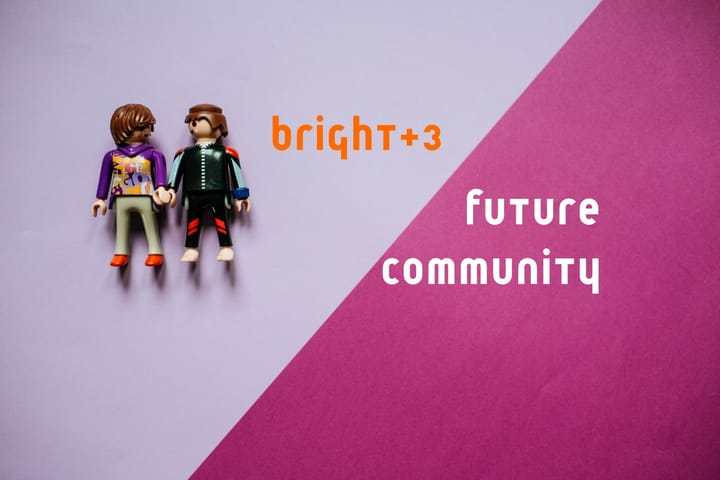The problem with strategy
Let's talk about strategy and why having one (or many) doesn't seem to help many organizations.

The word strategy is a constant in your daily life (or at least your working hours) if you days are anything like mine.
You need a strategy. Maybe a strategic plan. People talk and write about fundraising strategy, digital strategy, marketing strategy, community strategy, campaign strategy, content strategy, messaging strategy, membership strategy, communications strategy, outreach strategy, and organizing strategy.
To name but a few of the strategies of our days.
There are jobs that are all about strategy. Right now, my Future Community Jobs list has five roles that strategy in the title:
- Director, Content Strategy
- Engagement and Outreach Manager, Science & Strategy (that's a mouthful)
- Program Director, Democracy Strategy Group (admittedly, strategy is in the name of the group, not the title of the role)
- National Organizer for Electoral Strategy (another kind strategy)
- Director of Digital Strategy
Do you ever wonder what strategy really is? And if you and your organization are, you know, doing strategy well (or at all)? Be honest.
I wonder about it. I work with organizations all the time that talk about strategy all the time (especially digital strategy, where I happen do a lot of work). But nothing much appears very strategic.
But maybe I don't know what strategy is.
What is strategy?
A rather seminal Harvard Business Review article, What is Strategy? by Michael E. Porter in 1996, talks about strategy in the context of positioning. There are three elements of strategic positioning, Porter writes:
- Strategy is the creation of a unique and valuable position, involving a different set of activities. (so, strategy sets you apart from others)
- Strategy requires you to make trade-offs in competing—to choose what not to do. (strategy tells you what you shouldn't be doing)
- Strategy involves creating “fit” among a company’s activities. (strategy should inform what you need to do - the tactics you choose)
This doesn't feel super satisfying to me as someone who wants to see organizations doing strategy well instead of just using the word strategy.
Later, Porter says many companies fail with strategy because they aren't good at deciding that not to do. They see competitors and others doing something new or applying a new technology. And having some success. And they say "we should do that."
Unnerved by forecasts of hypercompetition, managers increase its likelihood by imitating everything about their competitors. Exhorted to think in terms of revolution, managers chase every new technology for its own sake.
Porter's words above are certainly an issue with strategy in general and digital strategy in particular.
Once more...what is strategy?
Sure, strategy makes you and your work unique, differentiated, and focused. But why are you doing that work. Seems like that's missing from Porter's definition.
Maybe it's just assumed that making money is the goal.

So we got to the G word: Goal.
Strategy is all about the goal. Joe Newsum sums this up nicely:
What is Strategy? Strategy is simply the goals you choose and the actions you take to achieve those goals.
But his next statement is probably more important:
The Right Goal in Business...Is to drive customer value better than the competition, in a financially superior way.
I don't want to frame nonprofit strategy around competitiveness (though every organization has some competitors for attention and resources).
But drive customer value is super important here.
Every organization has to bring value to the people it serves AND the people who support it. Sometimes those are the same people. Often they're not.
So many strategies. So little value for people.
It's easy(ish) for organizations to create a strategic plan that has a mission, a bunch of goals and, after much deliberation by various teams, a digital strategy, a fundraising strategy and a communications strategy. And probably a few other strategies.
Every team says "yeah, we have a strategy" and off you pop, working strategically towards some goals.
What I find is that, for many of these teams, the strategy doesn't align with "customer" value and they spend a lot of their time responding to the needs of other teams who also don't have value-driven goals to drive strategic choices.
So digital strategy ends up being about social media ads. Fundraising strategy is about increasing conversion rates one-tenth of a percent in the next campaign. Communications strategy is about whether or not we can reach young people with a Discord server.
There's no overarching value to the member, supporter or even affected audience that drives our choices. Only a bunch of internal strategies that maybe once seemed to make sense but now compete.
One solution is to have a clearly defined organizational strategy that includes a goal, measurable and tangible value (or values) for people, and ways for teams and their own strategies to plug into, report back to, and evolve alongside each other.
Another solution is to have organizational strategy leadership. This doesn't just mean having a "strategy director" or executive director who is responsible for shepherding the strategy (and has the tools and training to do that). It means building strategy leadership into the roles of many people so that more teams understand the value and values at stake.
And it means normalizing ongoing conversations about the strategy (and sub-strategies) so they can live and breathe. Too often people become excluded from strategy and its implementation. And too often strategy gets shoved into a figurative (or literal) drawer.
You've probably heard the saying "culture eats strategy for breakfast." And it does.
But a strategy that is valuable and responsive to people outside the organization can have a shot at becoming part of the culture.
So at least culture and strategy can eat breakfast together and not be eaten by the other.
Bright+3 advises community, communications and fundraising leaders who want to build content programs that reach and engage audiences. We work with non-profits, campaigns and news organizations. Contact us for more information.
Illustration by MOMO Studio on Unsplash.


